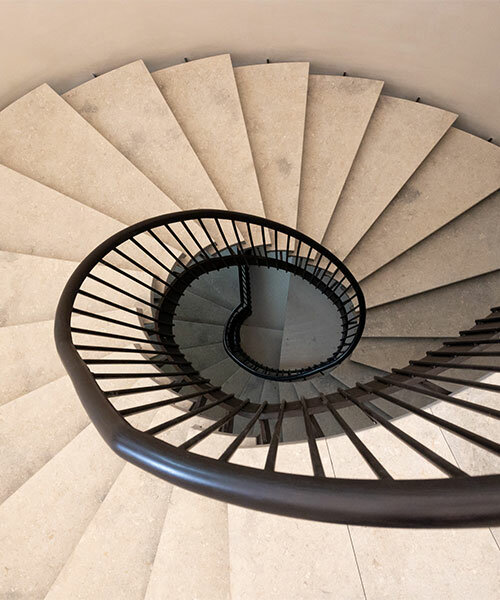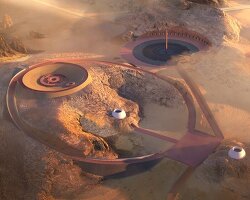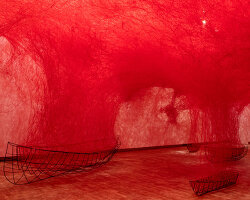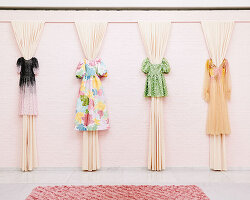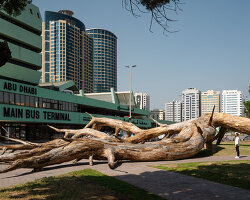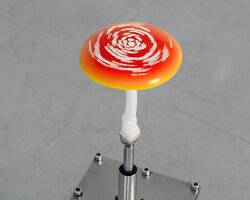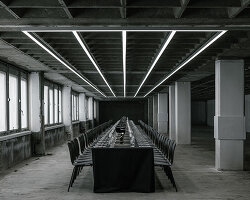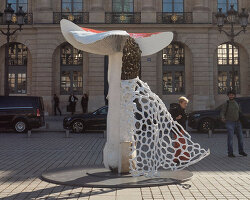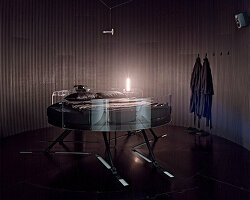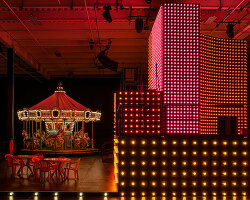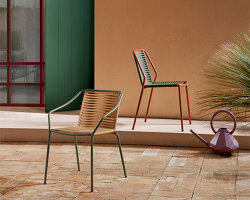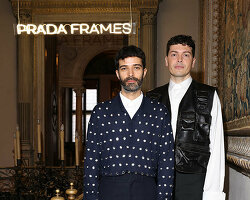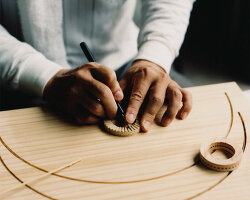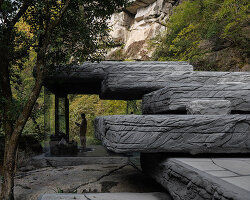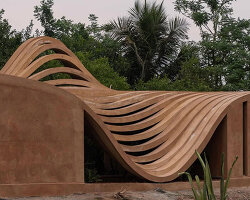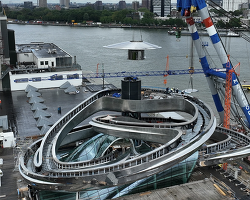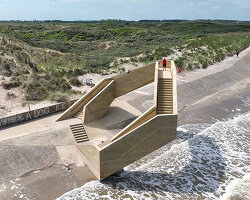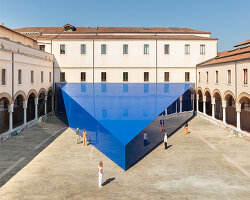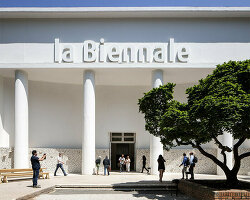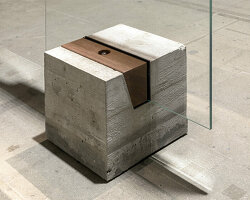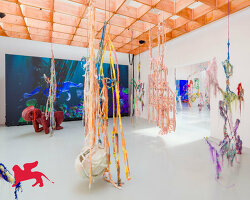Carsten Höller sculpts Doubt Staircase in Palazzo Diedo, Venice
Belgian artist Carsten Höller unveils the Doubt Staircase, a permanent and functional artwork at Palazzo Diedo in Venice. This spiral staircase transforms an originally unfinished 18th-century staircase in the palace, featuring metal balustrades, Vicenza stone, and marmorino marble, all joined by metal frames. The staircase is inclined at a subtle 5-degree angle—enough to be noticeable but not immediately obvious, creating a sense of doubt when stepped on, a recurring theme in Höller’s work. ‘We always think about doubt and uncertainty as something bad. I’ve been saying since 1999 that doubt is beautiful,’ Höller tells designboom. ‘It’s just a very natural way of being.’ To learn more about the spiral Doubt Staircase, its inspiration, and Carsten Höller’s perspective on doubt, read the full interview below.
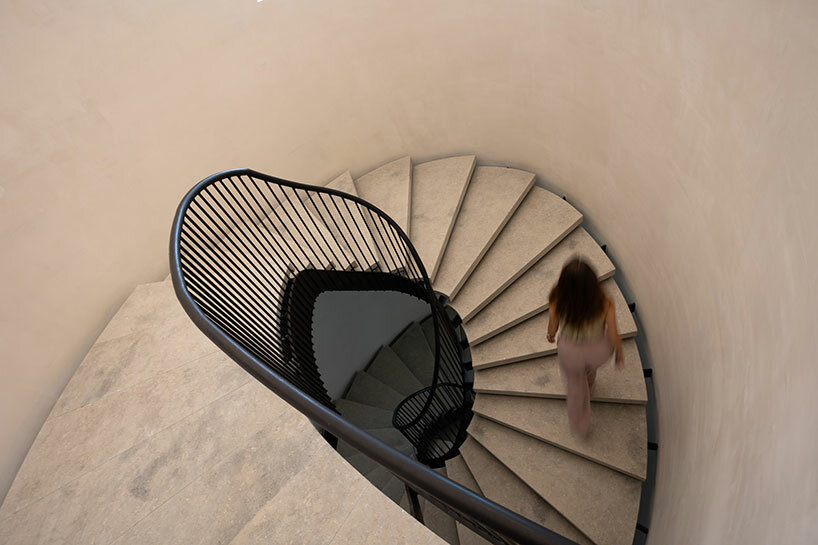
all images by Massimo Pistore. courtesy of the artist, Carsten Höller Studio and Palazzo Diedo – Berggruen Arts & Culture
Berggruen institute introduces Palazzo Diedo as new art center
A grand 18th-century residence in the Cannaregio district of Venice, Andrea Tirali’s Palazzo Diedo project remained incomplete due to the deaths of both the architect and the original owner. When the restoration and design team from Fassi Architects, comprising Silvio Fassi, Maddalena Gallamini, and Sebastiano Roveroni, took on the project, they discovered that no stairs connected the first and second piano nobile. To address this, they utilized the space added during a 19th-century redesign above the existing 18th-century staircase to link the two main levels. Carsten Holler’s project to create a spiral staircase, inspired by the Venetian staircases of Palazzo Contarini del Bovolo and Palladio, fit perfectly into this space. The Belgian artist has designed the spiral staircase to feature metal balustrades, Vicenza stone, and marmorino marble, all integrated with metal frames. Designed to be accessible to visitors, the artwork functions as a practical connection between the main floors of Palazzo Diedo.
Following its thorough restoration, Palazzo Diedo now serves as a new contemporary artistic center in Venice, operated by the Berggruen Arts & Culture Institute (find more here).
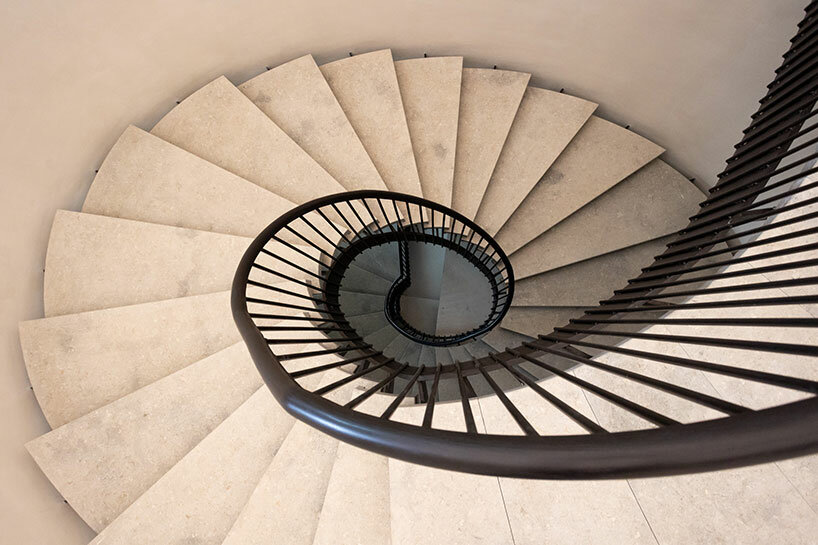
the Doubt Staircase is spiral, inclined, and oval
Interview with Carsten Höller
designboom (DB): Walk us through the inspiration behind transforming the unfinished staircase in Palazzo Diedo.
Carsten Höller (CH): Inspiration is always a very difficult question. It’s always very complex. It’s a number of factors that come into each project. But here, especially, it was a necessity. When I visited Palazzo Diedo for the first time, there was a staircase missing. It was Mario Codognato, the main curator of the Palazzo, who said that maybe this project would be something for me, and I gladly accepted the challenge.
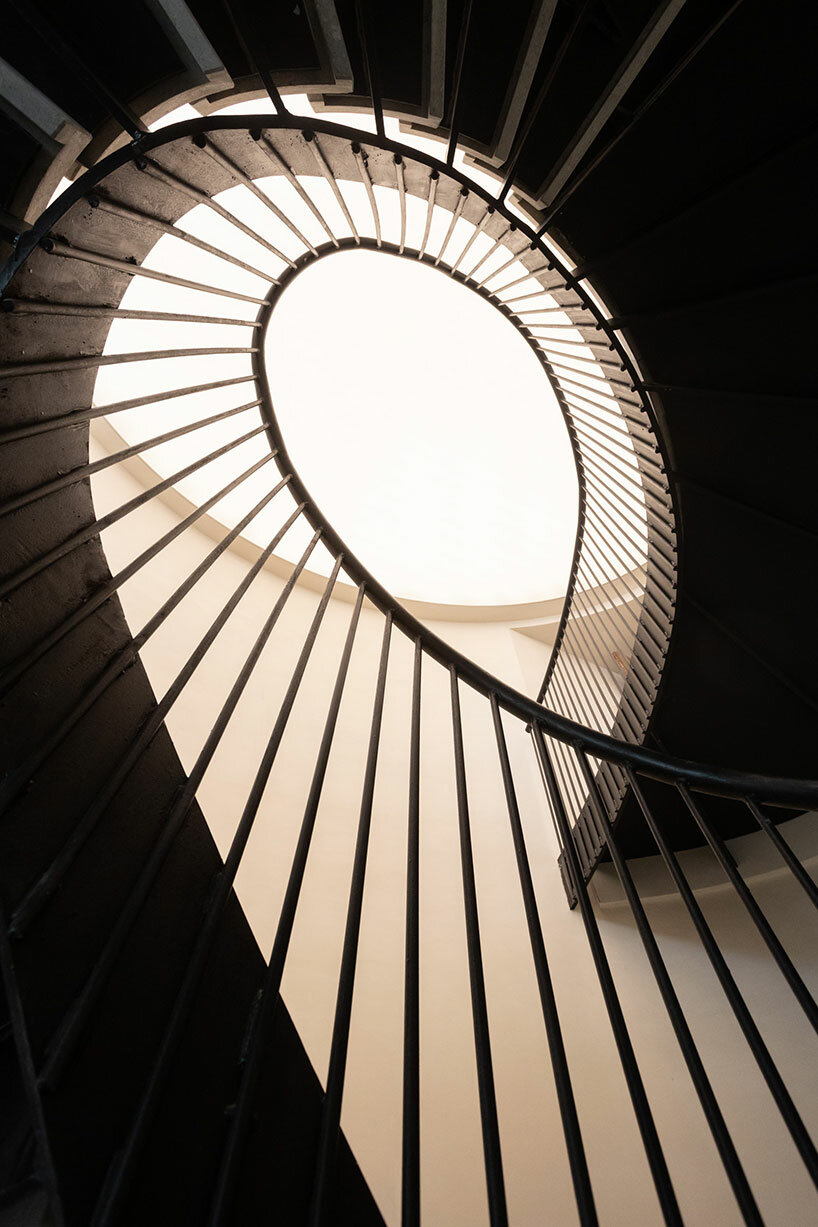
the spiral staircase transforms an originally unfinished 18th-century staircase in the palace
DB: How did you approach this staircase design from a structural structural point of view?
CH: Many people have seen the slides that I’ve been building since 1998. The first one was in Berlin. Then I added more slides on various occasions. Usually, I inserted them into existing architecture, but then I also built two freestanding towers to house the slides. One in Germany and one in Miami. When I built these towers, I was also interested in the stairs that support the towers. As we know, a slide only takes you down. But there are many ways the stairs can transport you. Stairs are very interesting. They create a certain state of mind: it’s a repetitive movement that is also subject to a number of restrictions. There are very strict laws for stairs. The railing has to be this high, it has to be this way. After a certain number of steps, you have to build a landing and turn around so that if you fall, you don’t fall down 100 steps and break all your limbs. Then I built a staircase that zigzags upwards. It’s based on the idea of the stairs that lead to these coal towers that were built hundreds of years ago. This is one reference I have. The other one is in Miami, where we actually built a spiral staircase that is inclined. It was already so complicated there that the level of complexity really inspired me to build this staircase now. It’s also a spiral staircase. It’s also inclined, but it’s oval.
In Venice, there are two very famous staircases: the Scala Contarini del Bovolo, a fantastic external spiral staircase glued to the corner of a building. The other is the famous oval staircase by Palladio. These are also very good references. Based on all this, I wanted to build a staircase that is spiral, oval, and inclined, because this is something that, as far as I know, hasn’t been done before. So the staircase is straight, but it’s always different lengths because it’s an oval. The whole body of the staircase is inclined by five degrees, which means you can’t really see it unless you look at some of the details. This creates a very peculiar sensation.
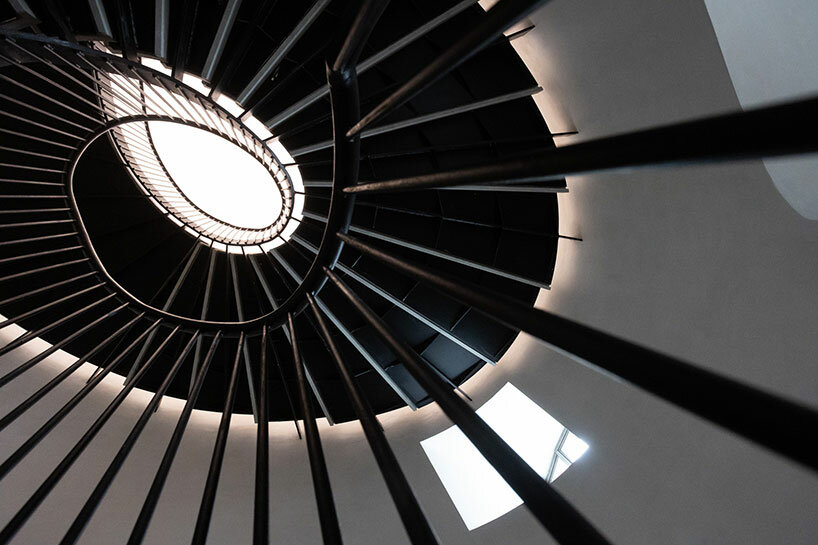
the staircase design features metal balustrades, Vicenza stone, and marmorino marble
DB: Can you elaborate on the significance of the 5-degree inclination? Can you walk us through the experience of someone climbing up the stairs?
CH: It’s hard to describe. It’s a subtle inclination. You don’t realize that it is inclined, but you feel something, which is not the usual, ‘being with yourself’ feeling. It almost makes a noise, but you don’t hear anything. It has an effect on you, that still needs to be described in better words. For the time being, let’s say it creates a moment of insecurity because everything looks fine and safe and there’s no particular problem. Still, something is out of sync. But maybe it’s not even an out-of-sync thing, maybe it’s an even more in-sync thing. It’s out of sync in terms of your usual way of being. Suddenly things that you think you know, you don’t know anymore. You have doubts about them.
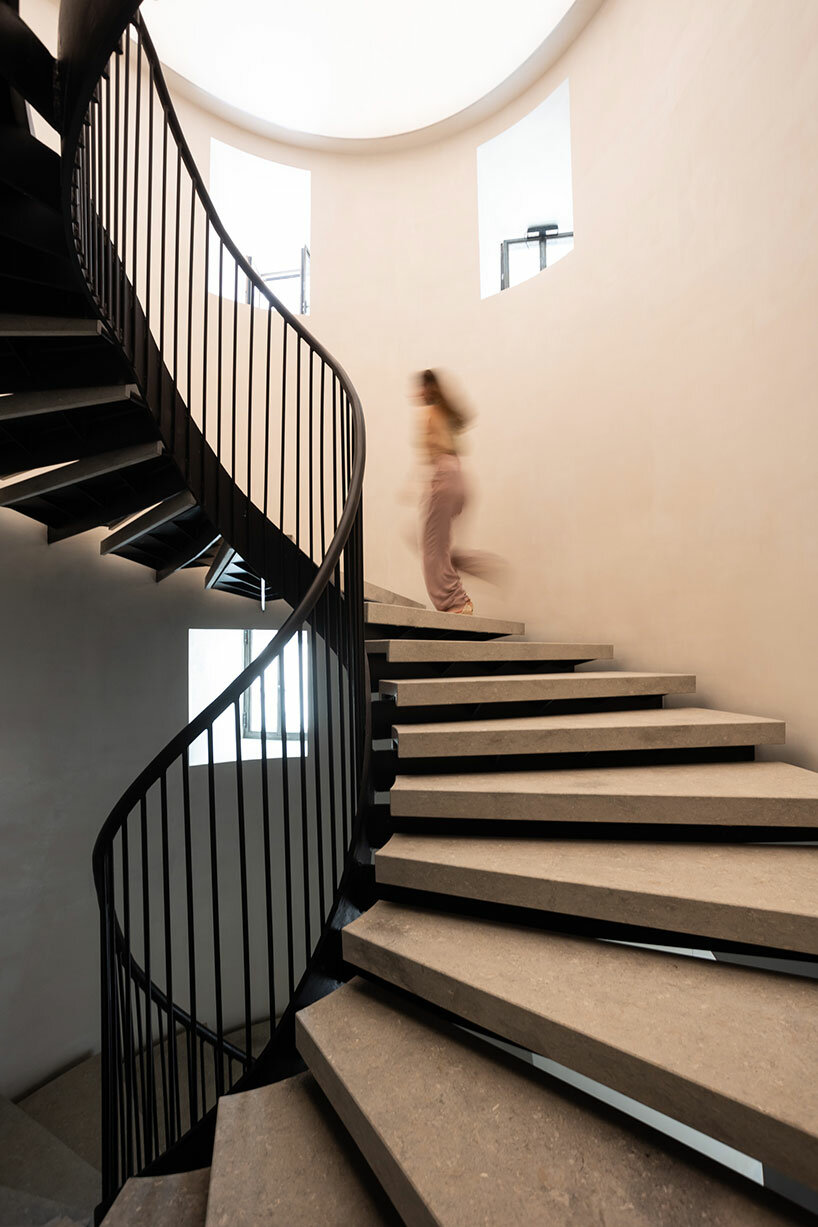
the staircase is inclined at a subtle 5-degree angle
DB: In your view, what roles do doubt and uncertainty play in the human experience?
CH: We always think about doubt and uncertainty as something bad. I’ve been saying since 1999 that doubt is beautiful. It has beautiful sides; it’s just a very natural way of being. Everything inside us is basically based on not really knowing. There’s some unpleasantness about it or even a danger, or in extreme cases, pain. When it comes to decision-making, avoidance of doubt and uncertainty, and everything that is entailed with them, has been a very strong force. The avoidance of pain has been a major factor in decision-making. But nowadays, it’s not like this anymore. We got pain quite well under control, but the doubt remains.
There are always general doubts: everything could be very different. All that we think we know could also be just a big construction. We all know this. We are subjected to something that is both outside us and part of our inner lives, that we can never really know about. We can find ways to deal with it—call it science, call it religion, call it something else. But it will always be, in a way, amorphous. I find this quite beautiful because if you’re relaxed enough about it, it doesn’t cause any pain or damage or danger. Then you can see the beauty of it. But this is a skill, and you need help for this. We don’t have a culture of this. The culture of doubt or uncertainty is not really developed, at least not in the so-called Western Hemisphere.
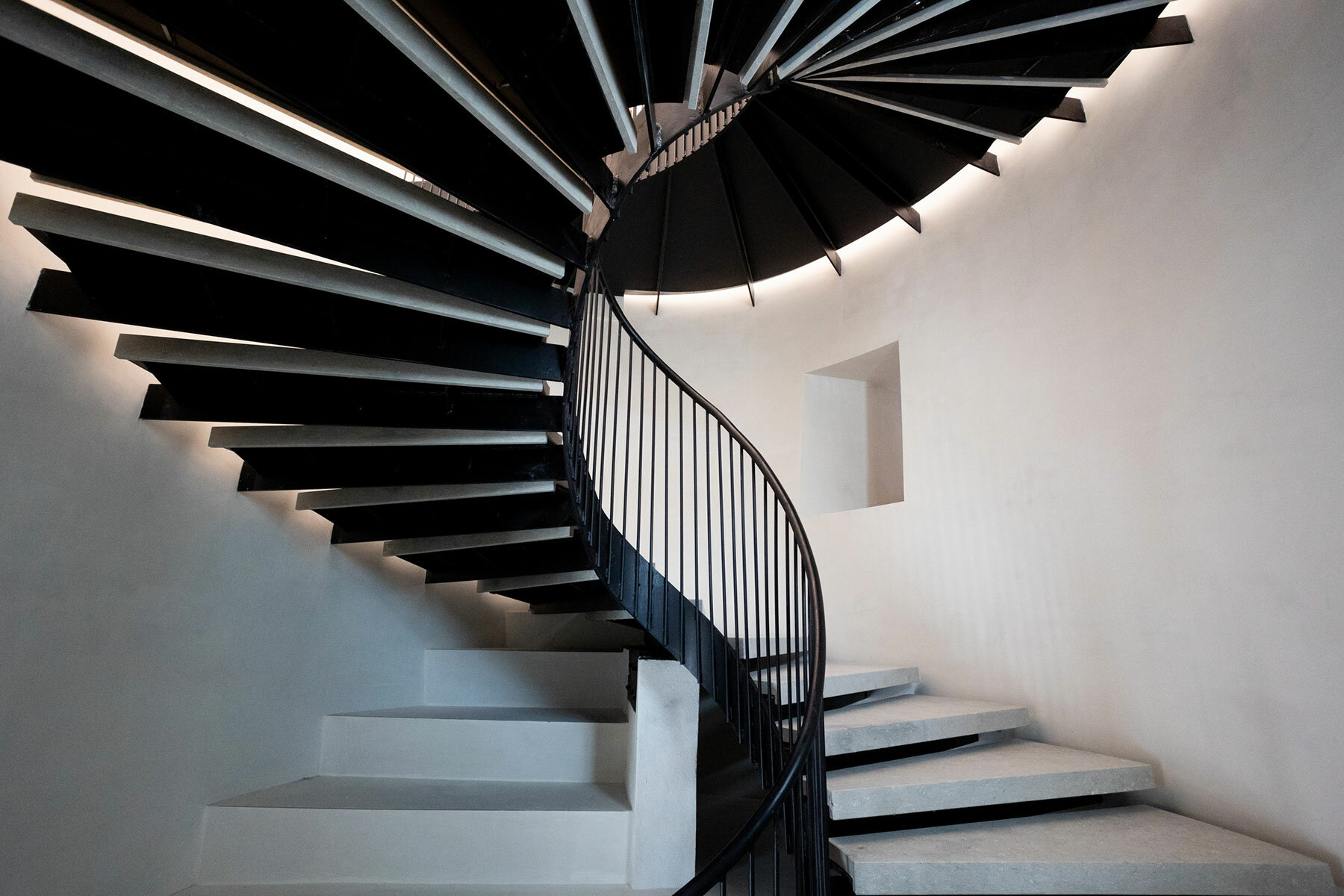
the design creates a moment of insecurity because although everything looks fine, something feels out of sync
DB: Are there still moments that you doubt yourself and your work? How do you overcome these moments?
CH: Yes, I have doubts. Every day, more and more, and I don’t overcome them. I think it’s like a spiritual luxury that I can have doubts like these. If I had doubts about whether I would have something to eat tomorrow, I would probably be in some kind of stress. But I don’t have doubts about that. If you’re not living in very difficult situations, doubt can be embraced and used to enlarge your field of vision, to say it metaphorically.
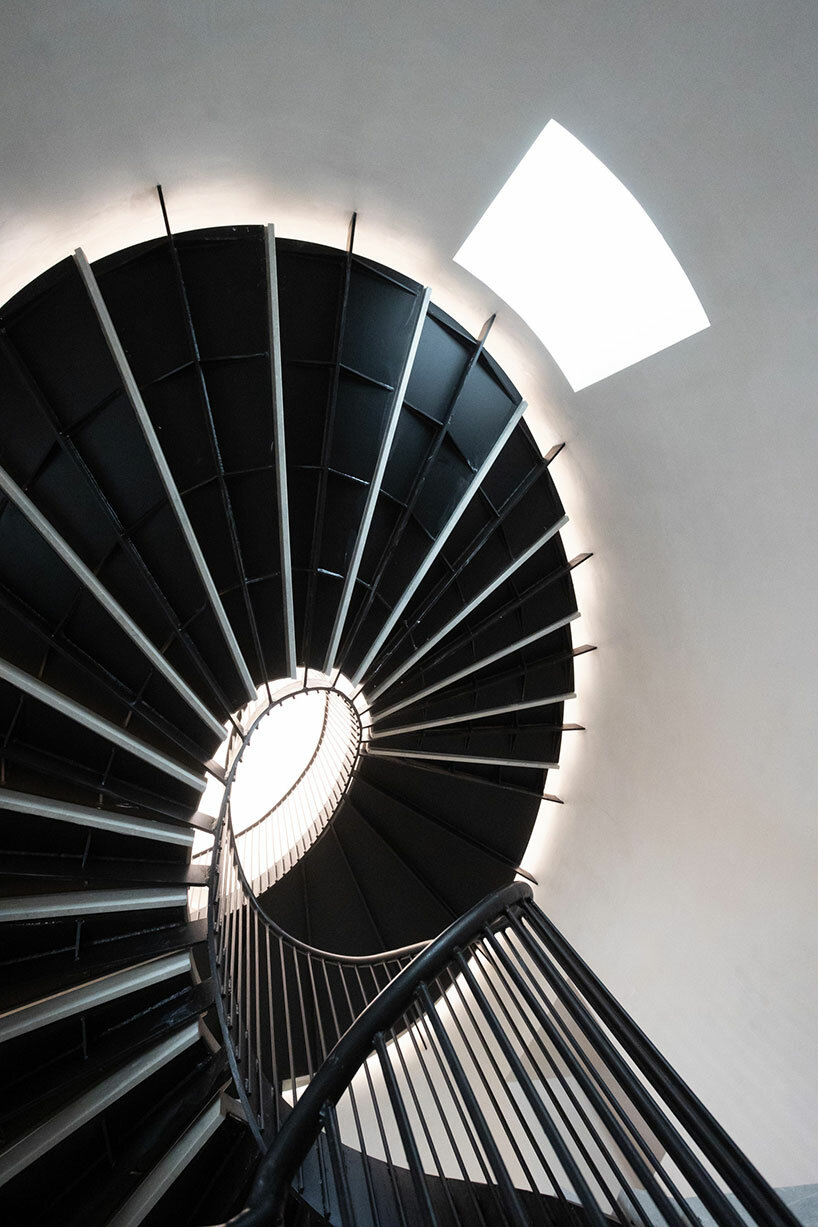
‘you don’t realize that it is inclined, but you feel something, which is not the usual, ‘being with yourself’ feeling’
DB: How does the Doubt staircase intervention contribute to Andrea Tirali’s legacy and the unfinished history of Palazzo Diedo?
CH: Palazzo Diedo is a beautiful place with a number of interesting works of art. But these artworks have a problem, which is that they’re recognizable as artworks. They have a boundary that makes them recognizable as such. So they become an entity. This isn’t the case with the staircase. It’s not an entity. It’s not a work of art that has a beginning and an end. It’s more of a functional thing: you have to go up or down these stairs. The artistic element is somehow integrated into the structure. So the structure isn’t its limitation, it’s only the basis on which it stands. So in a way it’s more complex and dirtier. I call this kind of art unsaturated because it’s an art with a function, which means you fulfill that function by being there, by standing there, by going up or down, it’s not a work of art in itself, it’s like a finished thing. And then it doesn’t matter whether you’re there or not. That’s what I call saturated. In that sense, I think it’s a work that has these qualities of being unsaturated.
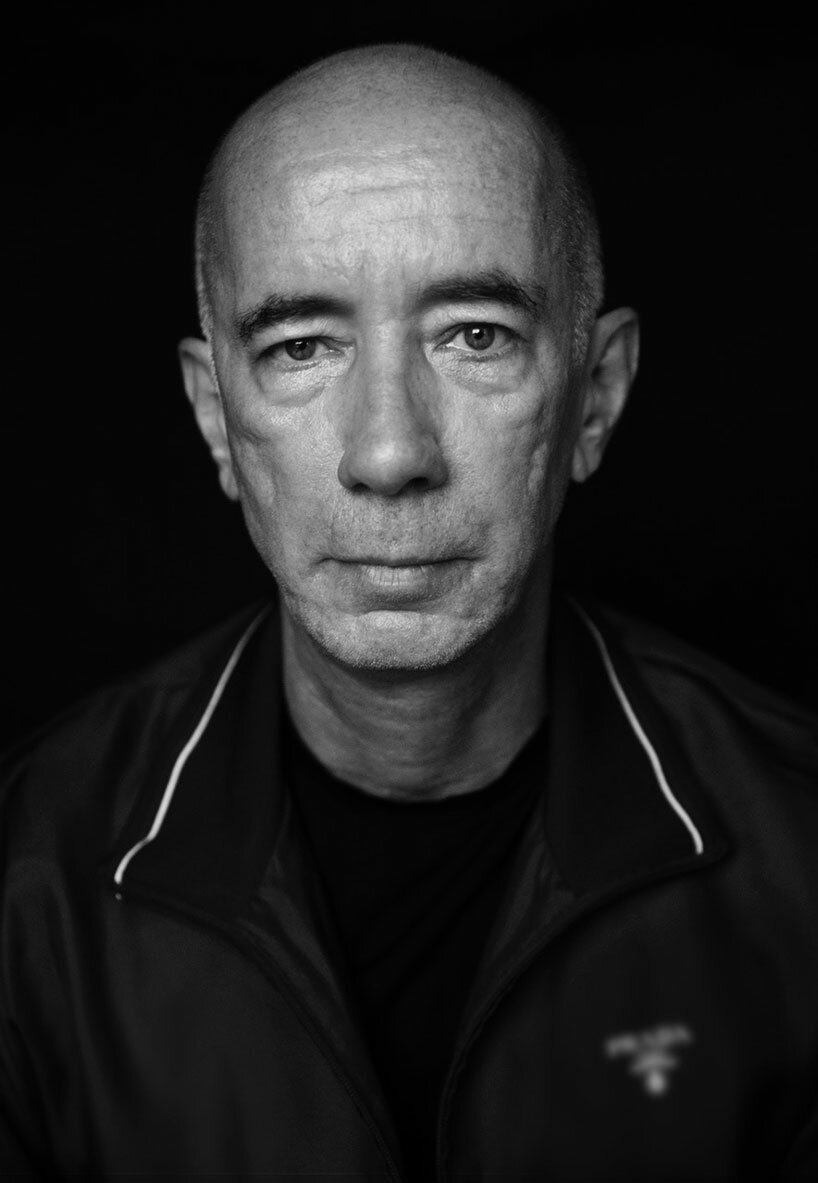
portrait of Carsten Höller
project info:
name: Doubt Staircase
artist: Carsten Höller | @carsten.holler
location: Palazzo Diedo | @berggruendiedo in Venice, Italy
